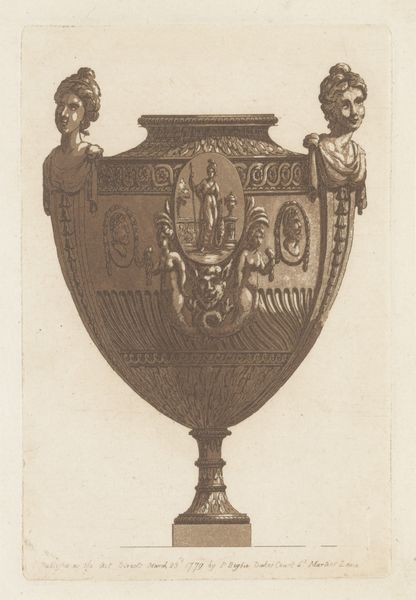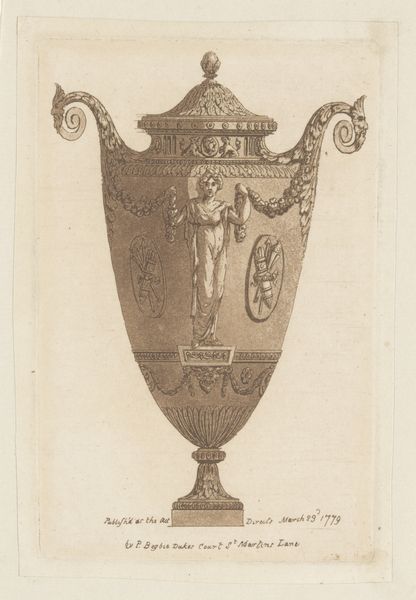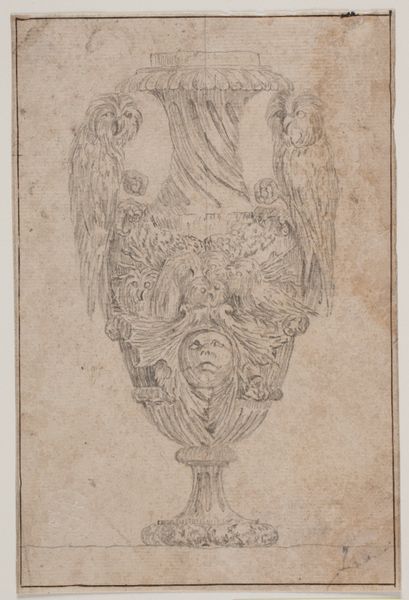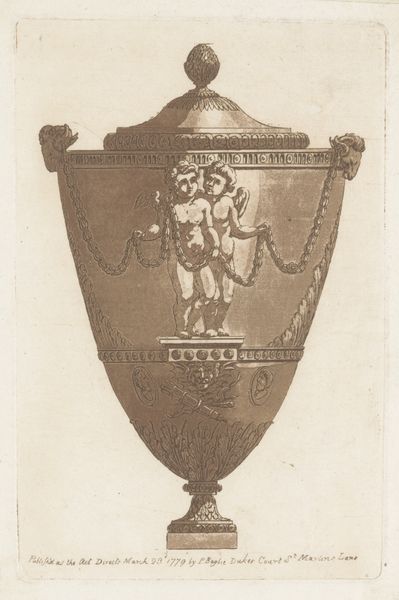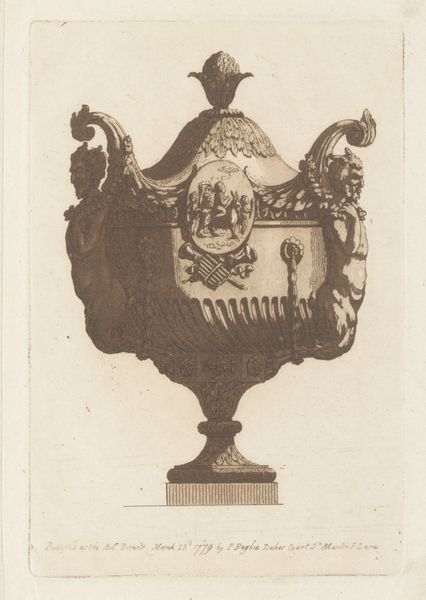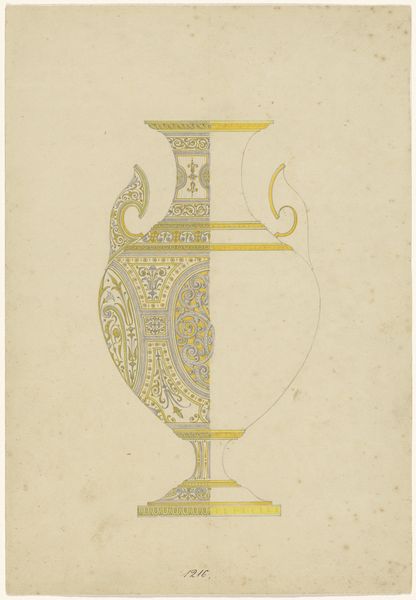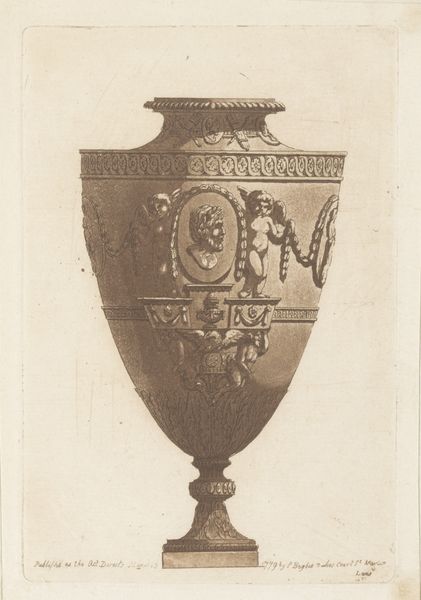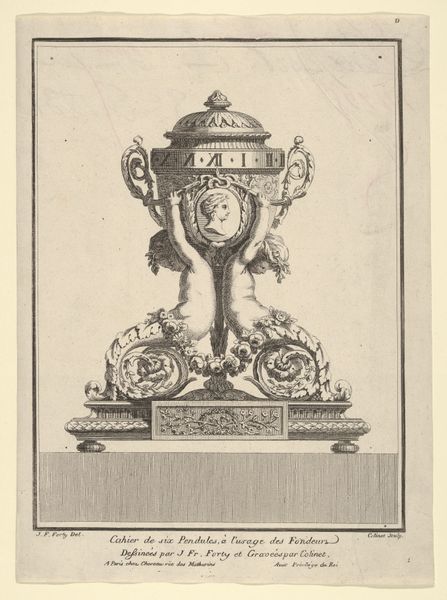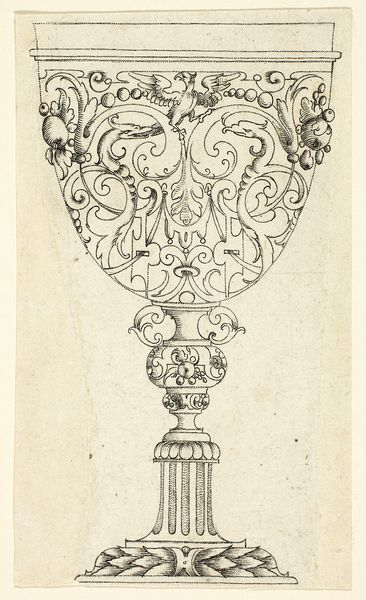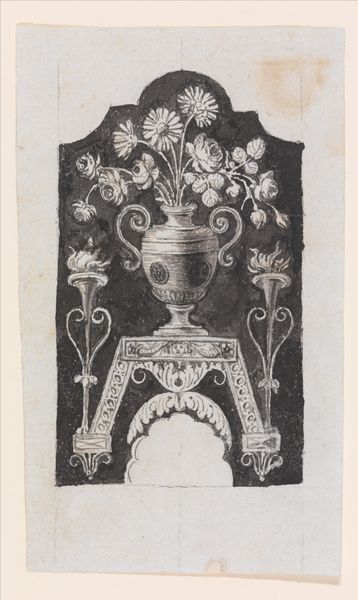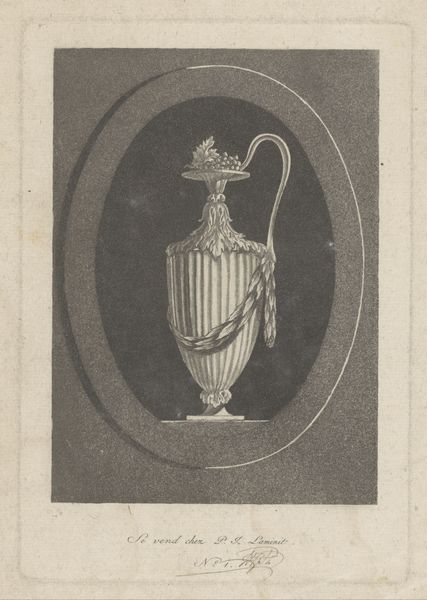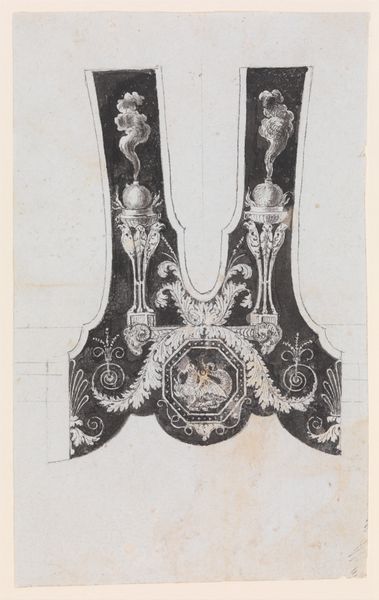
print, engraving
#
neoclacissism
# print
#
form
#
decorative-art
#
engraving
Dimensions: height 153 mm, width 100 mm
Copyright: Rijks Museum: Open Domain
Curator: Welcome! Today we are exploring "Antieke vaas met medaillon met lachende kop," or "Antique vase with medallion with a laughing head," a print potentially dating back to 1779. It's held here at the Rijksmuseum. Editor: My initial reaction is... grandeur mixed with the grotesque. The vase itself has this classic, almost pristine form, but that grinning face is undeniably unsettling. Curator: Precisely. The work encapsulates Neoclassicism, a movement heavily influenced by classical antiquity. Vases, in particular, became symbolic of taste and refinement, showcased within elite social circles. The imagery acted as markers of cultural capital, differentiating the aristocracy. Editor: But there's also a very strong decorative art element to it. It’s an engraving, making it accessible, and meant for display, to be collected. I’m curious about that "laughing head," though. It looks almost mocking, undermined by these little angels above it. I'm picking up hints of a deeper irony or satire here. Who is it laughing at? Curator: Perhaps, society itself. These were tumultuous times; the seeds of revolution were being sown. Such ornamentation, seemingly innocent, could serve as commentary on the elite's excesses or failures. Think about it: a classical vase defaced by this ambiguous, possibly sardonic figure. It becomes a very potent critique when placed in a socio-political framework. Editor: I also see that date—1779. That’s right on the cusp of massive upheavals. So is the artist engaging in a little subversive activity here? Could that face represent discontent, the looming threat to the status quo? Curator: Absolutely! The artist plays a subtle game. Ostensibly replicating antiquity, while embedding subversive imagery into the decorative. A quiet way of voicing discontent through what seems simply beautiful. Editor: So, it's not just about form and beauty. The "laughing head," then, isn't just a decorative element, but perhaps a warning, a sign of the changing times embedded within a symbol of tradition. Curator: Exactly. It pushes us to look beyond the immediate aesthetics and think about the broader forces at play. Editor: It gives me a lot to reflect on: beauty, form, societal roles, hidden critiques. Thanks. Curator: An excellent reflection that gives a context to this engraving's beauty. Thank you for joining.
Comments
No comments
Be the first to comment and join the conversation on the ultimate creative platform.

